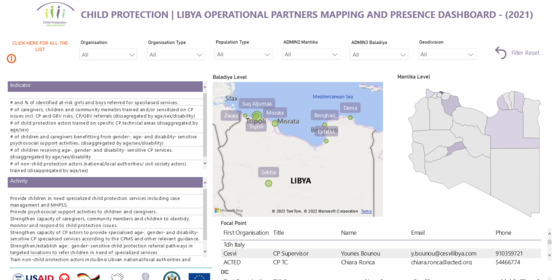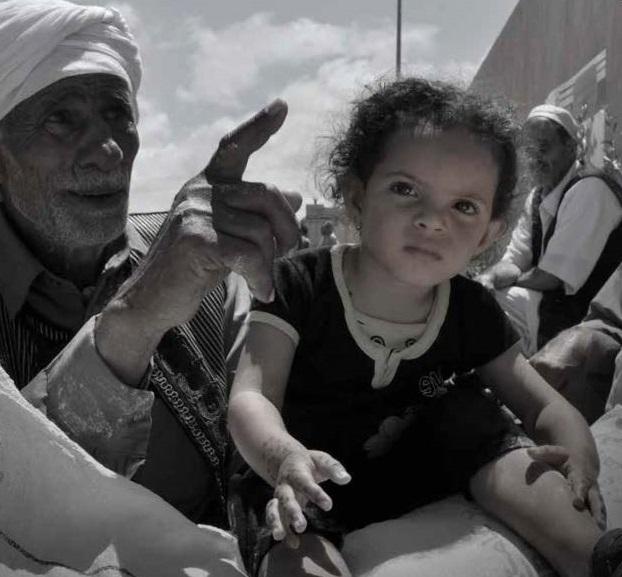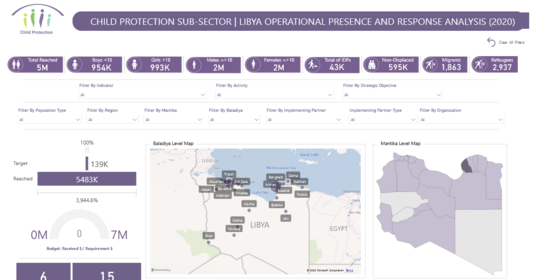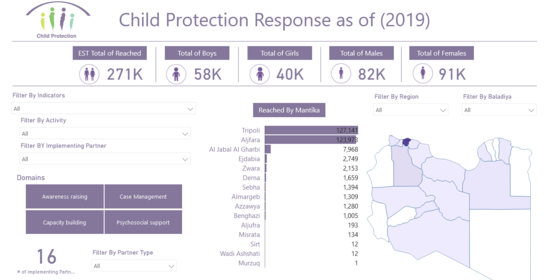
Child protection | Libya Operational presence and response analysis (2021)
Dashboard mapping partners and activities in 2021.
View more In Libya, girls and boys are living in a very volatile environment characterized by the presence of mines and unexploded ordnance, risk of recruitment and trafficking, high prevalence of eapons across the country, a fragmentation of families and community networks, particularly in the case of displacement, and a critical breakdown of basic services, including health and education. Migrant and refugee children in Libya have specific vulnerabilities linked to their status and, in some instances, nationality and race. The journey crossing the African continent to reach Italy, via Central Mediterranean route, is particularly dangerous. It takes most young migrants and refugees through Libya, where they contend with pervasive lawlessness and violence and are often detained, by State authorities and others. All children on the move are at heightened risk of human trafficking, arbitrary detention, forced labour, physical abuse and sexual exploitation during their journey and when they arrive in Libya.
In Libya, girls and boys are living in a very volatile environment characterized by the presence of mines and unexploded ordnance, risk of recruitment and trafficking, high prevalence of eapons across the country, a fragmentation of families and community networks, particularly in the case of displacement, and a critical breakdown of basic services, including health and education. Migrant and refugee children in Libya have specific vulnerabilities linked to their status and, in some instances, nationality and race. The journey crossing the African continent to reach Italy, via Central Mediterranean route, is particularly dangerous. It takes most young migrants and refugees through Libya, where they contend with pervasive lawlessness and violence and are often detained, by State authorities and others. All children on the move are at heightened risk of human trafficking, arbitrary detention, forced labour, physical abuse and sexual exploitation during their journey and when they arrive in Libya.
The Child Protection Working Group (CPWG) was established in October 2018 to ensure all children affected by the conflict receive quality and adequate protection assistance in a timely, efficient, and coordinated manner in line with the Minimum Standards for Child Protection in Humanitarian Action (CPMS) and the Humanitarian Response Plan (HRP). This coordination mechanism works to support, advice and advocate jointly with all relevant structures, for timely and standardised and harmonised prevention and response activities in children’s best interests, to strengthen the national child protection systems, and to promote actions that place children at the centre of the response.
Building on global standards for child protection, including the CPMS, and the specific nature of the emergency, the CPWG and its members adopt the following definition of Child Protection: "preventing and responding to abuse, neglect, violence and exploitation". This includes protecting and advocating against all forms of discrimination; ensuring immediate access to appropriate services; and ensuring durable solutions in the child’s best interests”. Child Protection in emergencies includes specific activities by Child Protection actors, whether national or community-based and/or by humanitarian staff supporting local capacities. This includes activities to address violence, exploitation, neglect and abuse, including issues such as sexual exploitation, family separation, trafficking, child recruitment, child labour, risk education, danger and injuries, physical violence and harmful traditional practices, such as early marriage.

Dashboard mapping partners and activities in 2021.
View more
Dashboard mapping partners and activities in 2020.
View more
Dashboard mapping partners and activities in 2019.
View moreLibya

Agenda Update on Tripoli Clashes & CP AoR Contingency Plan, Situation of Children in the Detention Centers, Target versus Achievement (Jan – July 2022), Partners’ Updates, AoB.